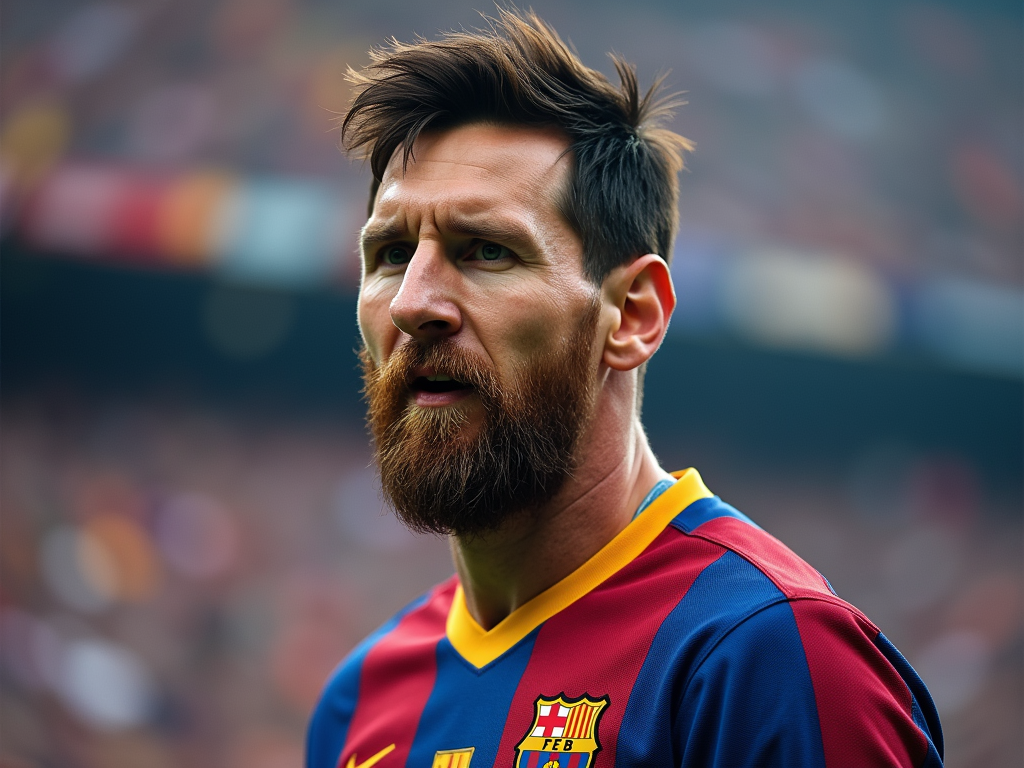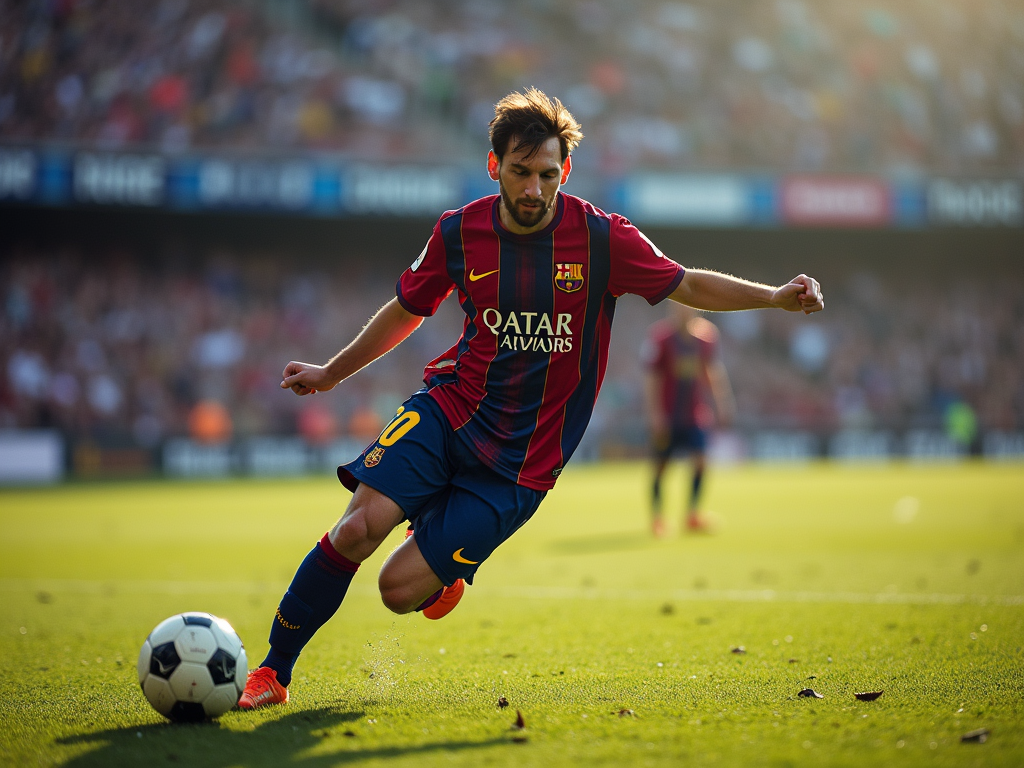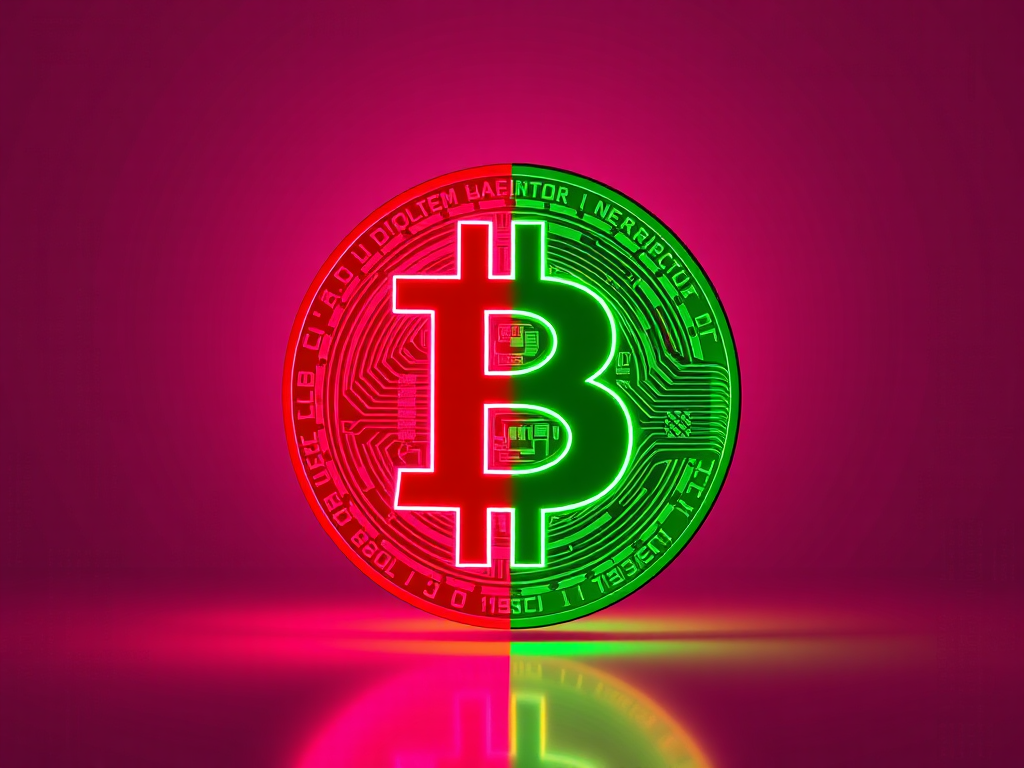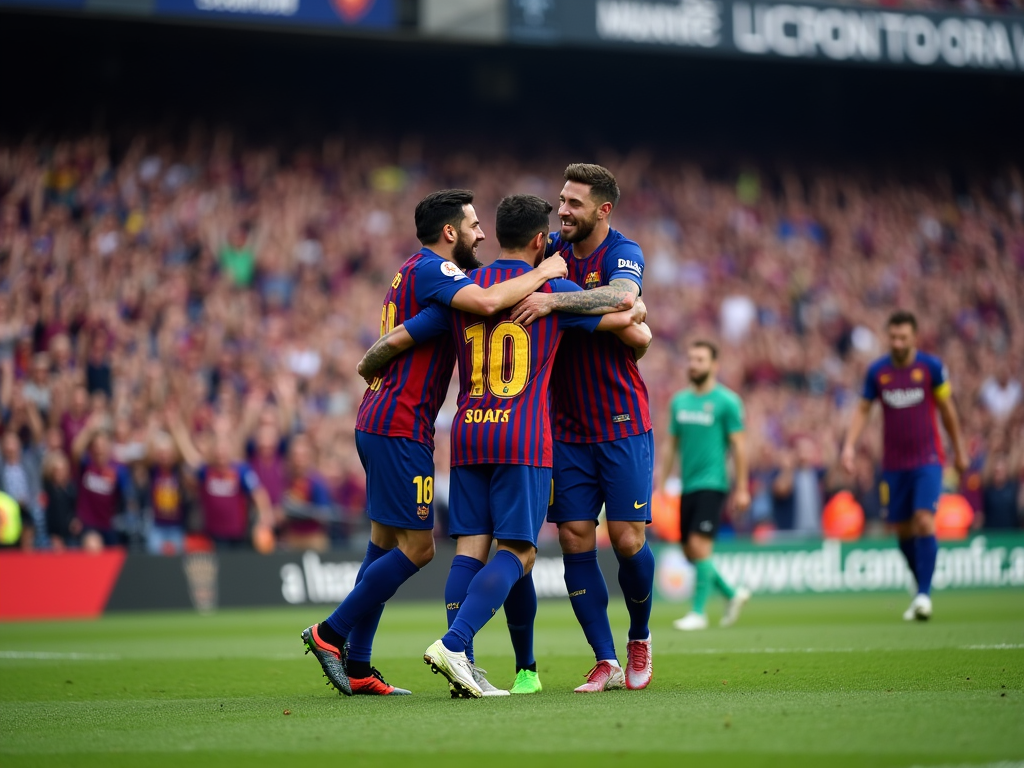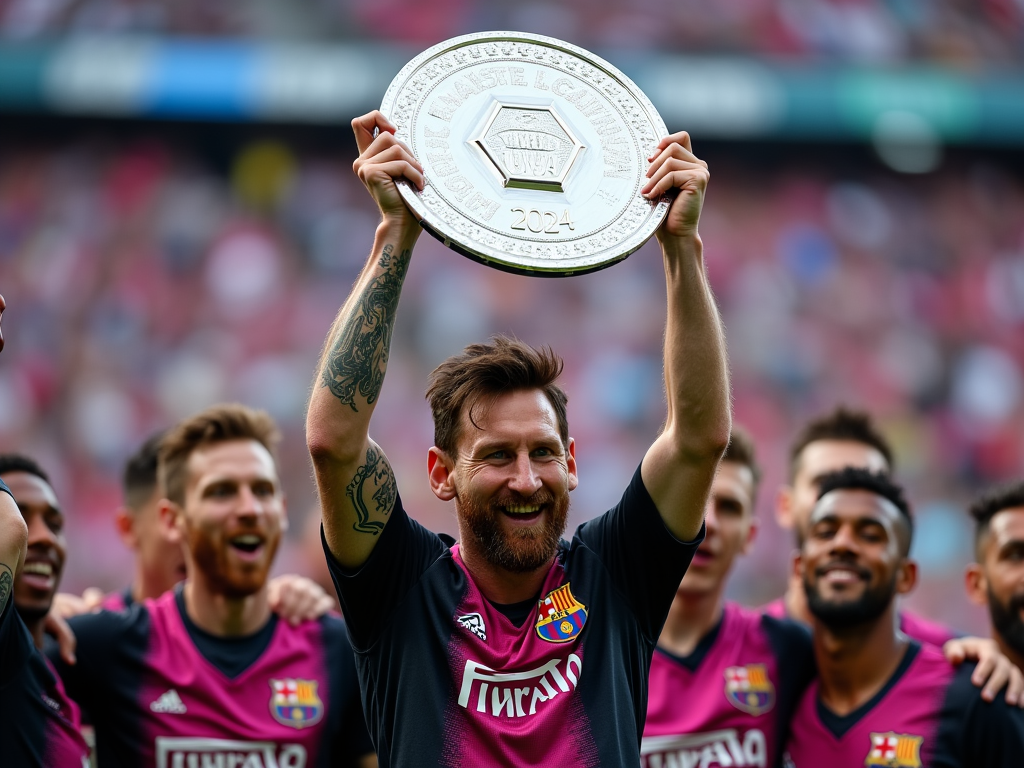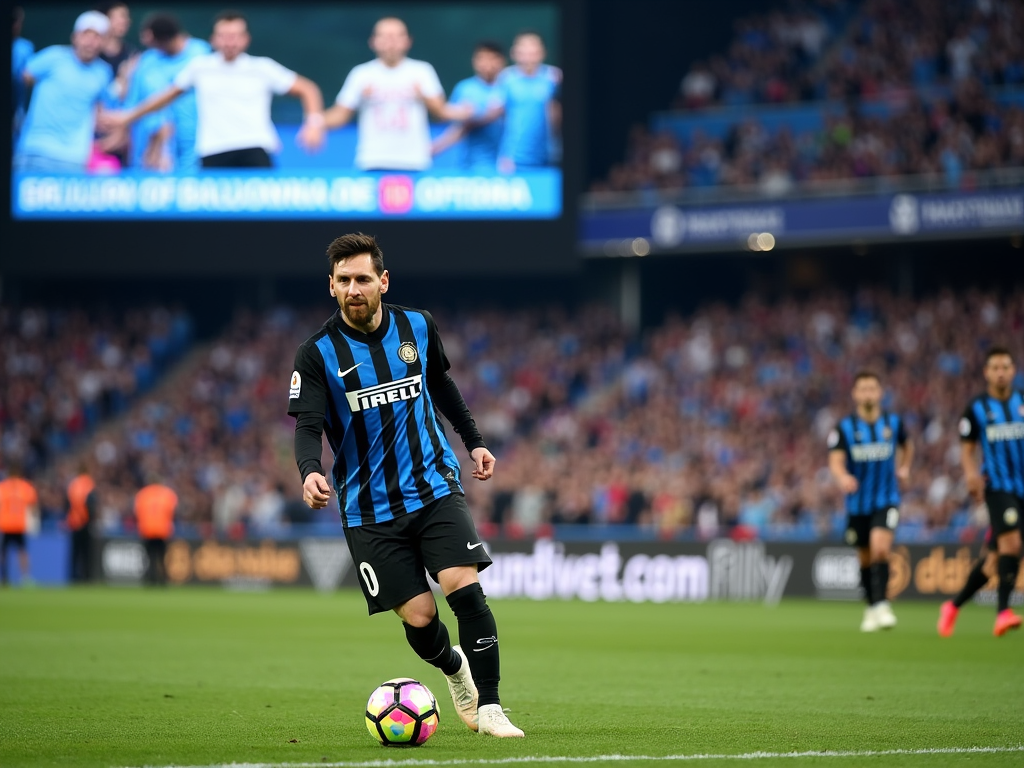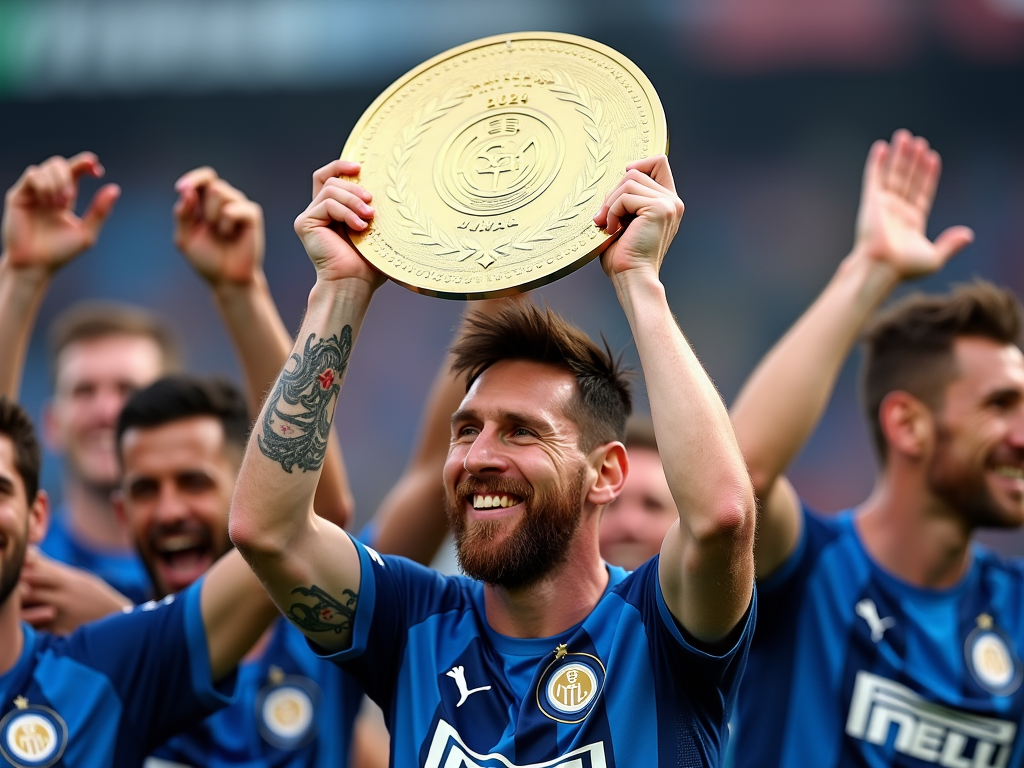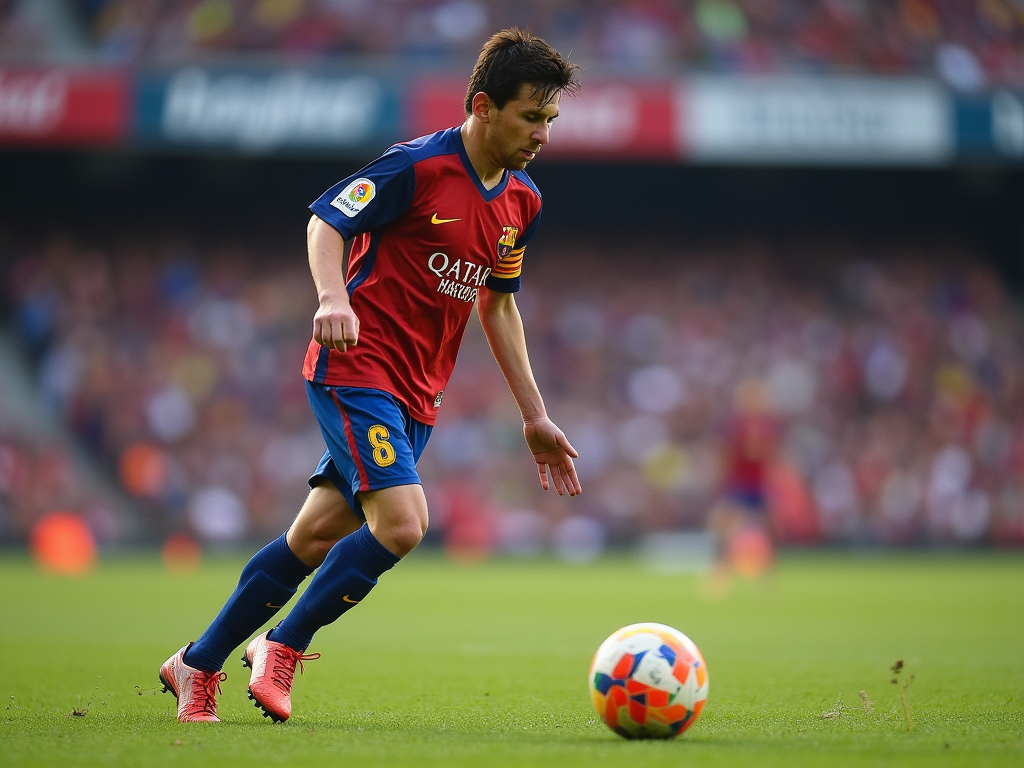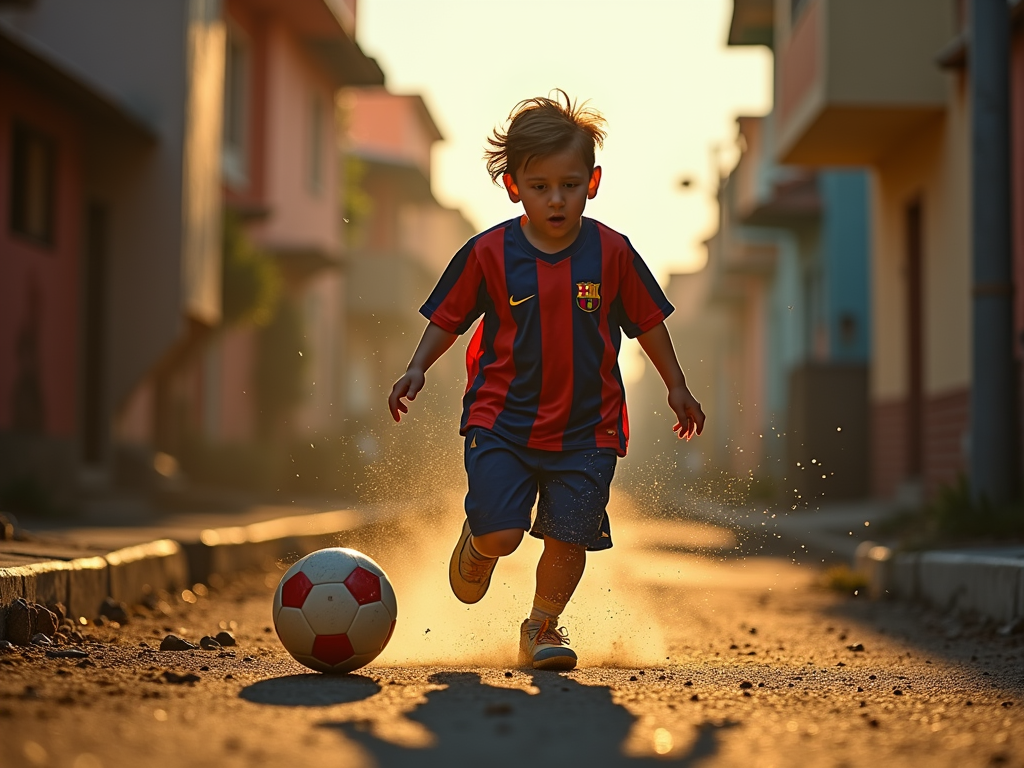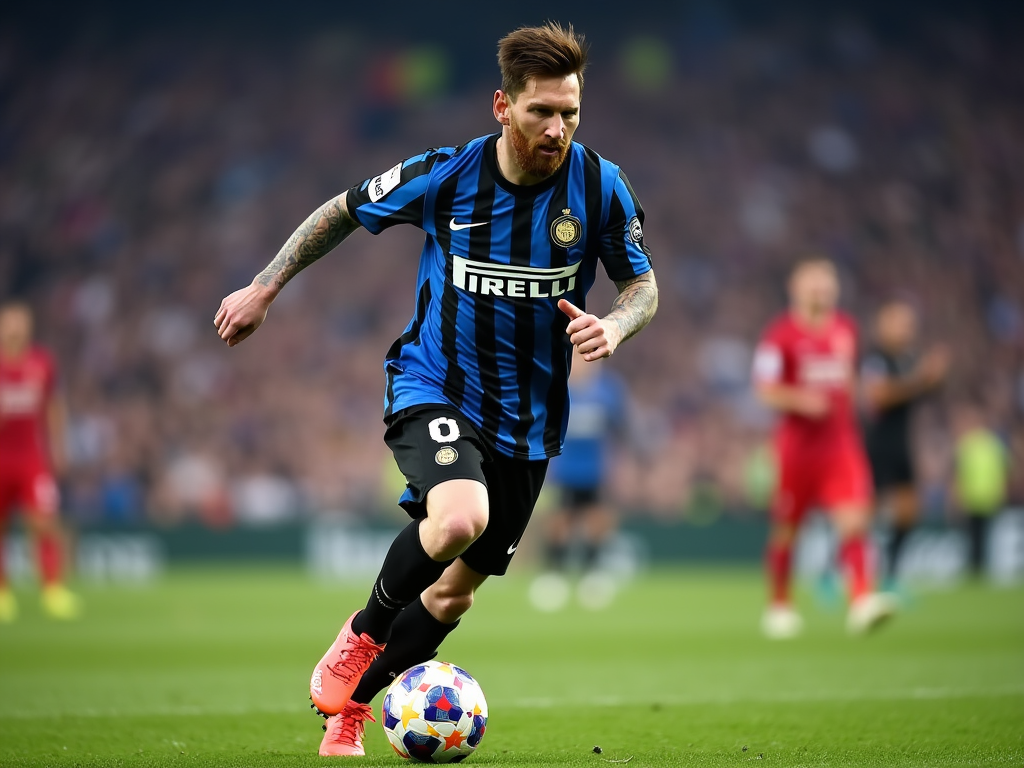Chapter 1: Early Life of Messi
The dusty streets of Rosario, Argentina, echoed with the rhythmic sound of a worn leather football bouncing against weathered concrete. Here, in this working-class neighborhood, a young boy named Lionel Messi first discovered the magic that would define his life. Small for his age and thin as a reed, Lionel moved differently from other children. Where they ran with typical childhood abandon, he danced with the ball, his feet moving in a language all their own. His father, Jorge Messi, watched from the sidelines with a mixture of pride and concern. Lionel’s passion for football was unmistakable, but a shadow loomed over the boy’s dreams. At just five years old, doctors had diagnosed him with a growth hormone deficiency. Treatment was expensive, a financial burden that seemed insurmountable for his working-class family. The medication would cost nearly $1,000 per month – an impossible sum for Jorge, who worked as a factory manager, and his wife Celia, a part-time cleaning worker. The family’s determination burned bright. They refused to let Lionel’s medical condition crush his dreams. Local club Newell’s Old Boys had already recognized the boy’s extraordinary talent, but the financial challenge of his medical treatment threatened to derail everything. His parents fought tirelessly, searching for solutions, believing deeply in their son’s potential. Young Lionel’s relationship with football was more than a game – it was a lifeline, a form of communication that transcended his physical limitations. On the rough neighborhood fields, the ball became an extension of himself. His teammates noticed something different about him – a connection to the game that went beyond typical childhood play. He moved with an intuition that seemed almost magical, weaving between opponents with a grace that belied his small stature. The diagnosis of growth hormone deficiency could have been a devastating blow. Many would have seen it as an insurmountable obstacle. But for Lionel and his family, it became a challenge to overcome, a mountain to climb. They would not let medical limitations define his potential.
The Messi family’s salvation came unexpectedly from across the ocean. FC Barcelona scouts had heard whispers of the young Argentine prodigy and were intrigued by his extraordinary skills. They saw beyond his physical limitations, recognizing a talent that transcended typical measurements. The club’s medical team believed they could help with Lionel’s growth hormone treatment, offering a lifeline that would change everything. Leaving Rosario was not a simple decision. Lionel’s roots ran deep in the Argentine soil, with a tight-knit family and a community that had watched him grow. His grandmother, María, would often sit on the front porch, watching her grandson practice, her weathered hands clutching a worn photograph of his early football moments. The potential move to Barcelona represented both hope and heartbreak – an opportunity that would tear the family apart physically, but potentially unite them through a shared dream. At thirteen, Lionel’s frame was still small, his body struggling against the growth hormone deficiency. Barcelona’s doctors developed a comprehensive treatment plan, promising to cover the expensive medical interventions that his family could never afford. The contract was more than a football agreement; it was a lifeline, a medical rescue that would allow the young boy to pursue his passion. The journey to Barcelona was a mix of excitement and uncertainty. Lionel clutched a small bag containing his most precious possessions – a few photographs, his well-worn football boots, and a small medallion from his grandmother. His father Jorge accompanied him, leaving behind his job, his familiar life, investing everything in his son’s potential. The airplane ride represented more than a physical journey; it was a leap of faith, a transformation waiting to happen. La Masia, Barcelona’s legendary youth academy, would become Lionel’s new home. The stark dormitories, the disciplined training regimens, and the international environment were worlds away from the dusty streets of Rosario. Here, football was not just a game but a scientific pursuit, where every movement was analyzed, every skill meticulously developed. The other boys in the academy initially viewed Lionel with a mixture of curiosity and skepticism. His small frame and quiet demeanor stood in contrast to the typical football prospect. But on the field, something magical happened. When the ball touched his feet, all doubts disappeared. He moved with an intuition that defied physical limitations, creating space where none existed, transforming the game’s very understanding.
The rigorous training at La Masia transformed Lionel’s natural talent into precise skill. Coaches like Josep Guardiola noticed something extraordinary in his movement – not just technical ability, but an almost telepathic understanding of football’s intricate dance. His teammates would later describe how he seemed to see the game differently, anticipating movements before they happened, reading the field like a complex mathematical equation. Nights in the dormitory were filled with quiet conversations, homesickness mixing with ambition. Lionel’s Spanish was initially limited, making communication challenging. He would often sit quietly, drawing comfort from letters from his family and the rhythmic sounds of his teammates’ conversations. The growth hormone treatments continued, a daily reminder of his physical challenges, but also his extraordinary determination. His body began to respond to the treatments, though he would always remain smaller than typical players. What he lacked in physical size, he compensated with extraordinary technique. Coaches developed specialized training regimens that maximized his natural gifts – quick footwork, exceptional ball control, and an uncanny ability to change direction instantaneously. The medical staff at Barcelona became more than healthcare providers; they were architects of his potential. Regular injections, careful nutritional monitoring, and personalized physical training slowly transformed the small boy from Rosario into a footballer with unprecedented potential. Each milestone was carefully tracked – not just his football skills, but his physical development. His family sacrificed everything for this opportunity. Jorge took odd jobs in Barcelona, ensuring he could remain close to his son. His mother Celia would make periodic visits, her eyes searching for signs of the little boy she had left behind, now transforming into a young man with a destiny larger than their wildest dreams. The academy’s philosophy of total football perfectly matched Lionel’s intuitive playing style. He wasn’t just learning techniques; he was absorbing an entire philosophical approach to the game. Positional flexibility, constant movement, understanding space – these became as natural to him as breathing. The other boys watched in awe as he seemingly reinvented football’s fundamental principles with each training session. By sixteen, Lionel had become more than a prospect. He was a phenomenon waiting to be unleashed, a living testament to what determination, medical intervention, and extraordinary talent could achieve. Barcelona’s investment was more than financial – it was a belief in potential beyond conventional understanding.
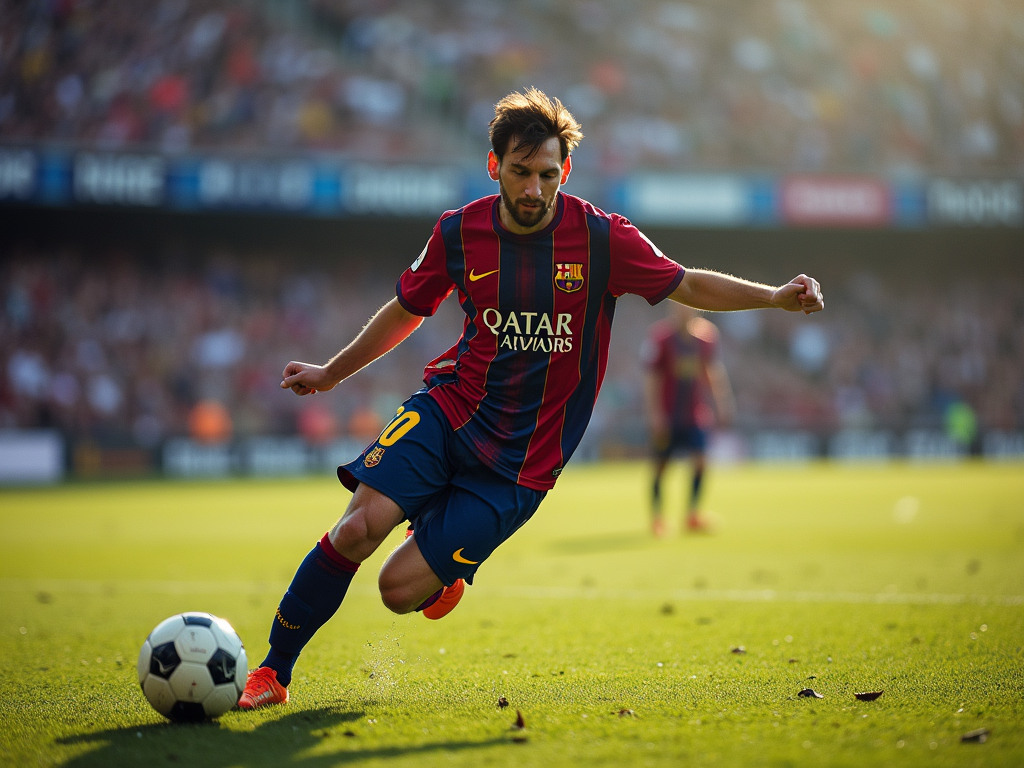

Chapter 2: Rise to Stardom
The fluorescent lights of Barcelona’s La Masia youth academy cast a soft glow on the skinny teenager with a determined glint in his eyes. Lionel Messi’s frame was slight, his legs thin and seemingly fragile, but his movements on the football pitch told a different story. Every touch of the ball was deliberate, every movement calculated with an almost supernatural precision that belied his physical limitations. His growth hormone deficiency had been a potential roadblock that could have ended his football dreams before they truly began. At just 13 years old, Messi faced a medical challenge that threatened to separate him from his one true passion. The treatment was expensive, costing around $900 per month – a sum that seemed impossible for his working-class family from Rosario, Argentina. FC Barcelona saw something extraordinary in this young player. Not just talent, but a rare potential that transcended conventional expectations. The club made an unprecedented decision: they would cover Messi’s medical treatment in exchange for his commitment to their youth system. It was a gamble that would redefine football history. Jorge Messi, his father, watched carefully as his son transformed from a talented local player to a potential international star. The family’s sacrifice – leaving Argentina, adjusting to a new culture, supporting Lionel’s dream – was immense. Every training session, every match became a testament to their collective determination. The Barcelona youth coaches were first to recognize something truly special. While other players followed tactical instructions, Messi seemed to intuitively understand the game’s rhythm. His low center of gravity, extraordinary ball control, and lightning-quick acceleration set him apart from his peers. He wasn’t just playing football; he was reimagining how the game could be played. By age 16, Messi’s performances in Barcelona’s youth teams were creating whispers of excitement. His debut with Barcelona’s reserve team was just the beginning. On October 16, 2004, at 17 years old, he made his first-team debut – a moment that would be etched forever in football folklore. The stadium watched in anticipation as this diminutive teenager stepped onto the pitch, wearing the legendary blue and red colors of Barcelona. Little did they know they were witnessing the birth of a football revolution that would captivate millions worldwide.
Frank Rijkaard, Barcelona’s head coach, recognized the spark in Messi that others might have overlooked. During training sessions, he would watch intently as the young Argentine weaved through defensive lines with an almost supernatural grace. Players twice his size seemed to become invisible when Messi possessed the ball, his movements so quick and unpredictable that defenders could only watch in bewilderment. Ronaldinho, the Brazilian maestro who was then Barcelona’s primary star, became Messi’s unexpected mentor. Where others might have felt threatened by the young talent, Ronaldinho saw a kindred spirit. During late-night training sessions, he would share techniques, showing Messi how to read the game’s invisible currents, how to anticipate movement before it happened. The pressure was immense. Every touch, every move was scrutinized. Barcelona had invested not just money, but hope in this slight teenager from Argentina. His hormone treatment continued, transforming his body gradually. Each centimeter of growth, each ounce of muscle added to his frame represented more than physical development – it was a testament to potential being realized. Teammates noticed something different about Messi. While other young players sought spotlight and personal glory, he remained intensely focused on the collective game. His passes were surgical, his vision beyond his years. During youth matches, he didn’t just play – he conducted an orchestra of football, making complex movements look effortlessly simple. Family remained his anchor. Jorge and his mother Celia would travel from Argentina, watching every match, supporting their son’s extraordinary journey. Their sacrifices were etched in every goal, every assist. The financial strain, the cultural displacement, the medical challenges – all faded against Lionel’s growing brilliance. By 2005, his performances demanded attention. The local Barcelona media began writing about this extraordinary talent. Comparisons to legendary players started emerging, though most seemed premature. Messi didn’t just want to be compared – he was quietly determined to create his own legacy. Tactical innovations became his signature. Where traditional wingers followed predictable paths, Messi created new geometries on the football pitch. His left foot became a precision instrument, capable of transforming impossible angles into goal-scoring opportunities. Coaches would spend hours analyzing his movement, trying to decode the intuitive magic that seemed to flow through him.
The 2005-2006 season marked a pivotal moment in Messi’s early career. Champions League matches became his proving ground, where he would demonstrate that potential was transforming into genuine world-class talent. Against elite European teams, he moved with a confidence that belied his young age, challenging established defensive strategies with each remarkable play. Rijkaard’s tactical approach perfectly complemented Messi’s natural abilities. The Dutch coach understood that traditional positional restrictions would only limit such extraordinary talent. He gave Messi strategic freedom, allowing him to drift between attacking positions, creating unpredictable pathways that defenders could not anticipate. Physicality had always been Messi’s potential weakness. Standing shorter than most professional players, he developed a remarkable low center of gravity that became his greatest defensive weapon. Where stronger players might be easily knocked off balance, Messi’s extraordinary core strength and balance allowed him to maintain possession under incredible pressure. His relationship with the ball transcended typical player-instrument dynamics. Each touch seemed like a conversation, a nuanced dialogue where the football responded to his slightest intention. Teammates would later describe watching him train as witnessing something beyond technical skill – it was almost like observing a form of athletic poetry in motion. Cultural adaptation remained challenging. Speaking limited Spanish and feeling perpetually like an outsider, Messi channeled his emotional energy into performance. The football pitch became his primary language, communicating complex narratives through movement and precision that words could never capture. Barcelona’s youth academy, La Masia, had produced talented players before, but Messi represented something entirely different. He wasn’t just a product of their system; he was redefining what their system could achieve. Medical challenges that might have ended another player’s career became footnotes in his extraordinary journey. Tactical analysts began studying his movements with scientific precision. His ability to read defensive lines, to create space where none seemingly existed, suggested an almost supernatural understanding of football’s underlying mathematics. Each match became a complex equation that Messi solved with instinctive brilliance.
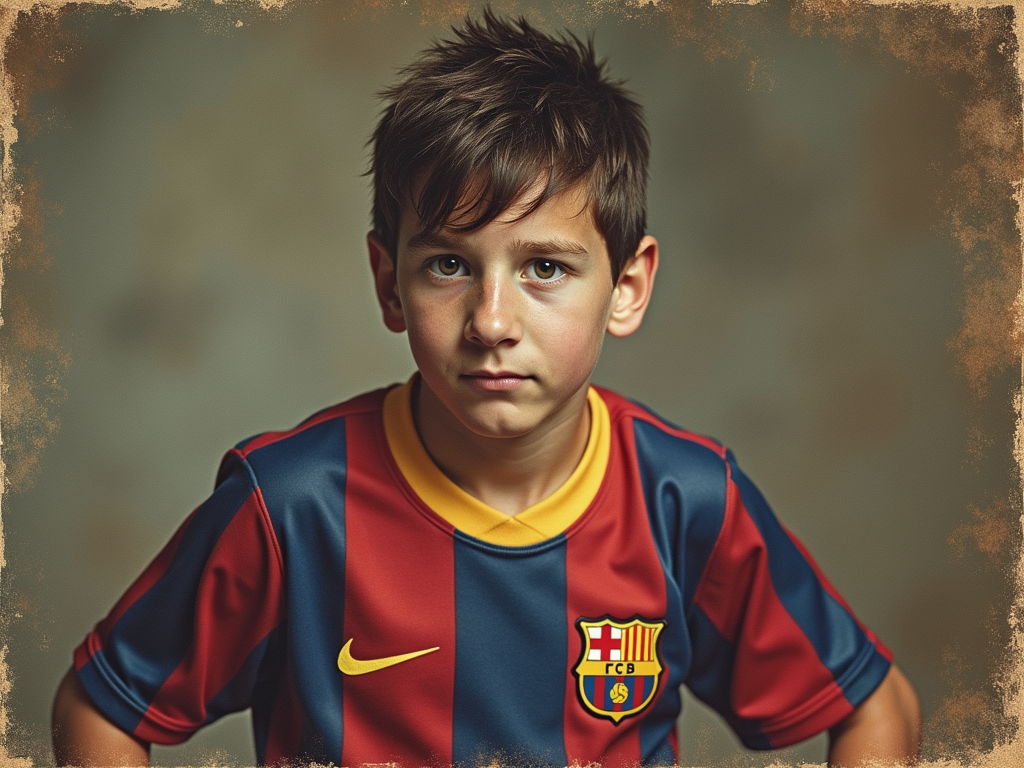

Chapter 3: Era of Triumph
The Camp Nou stadium pulsed with electric energy, thousands of voices merging into a thunderous roar as Lionel Messi danced past defenders. His feet moved like liquid mercury, the ball an extension of his very being. Between 2008 and 2012, he wasn’t just playing football; he was redefining it. Pep Guardiola’s tactical genius had transformed Barcelona’s playing style, and at the heart of this revolution was Messi. His understanding with Xavi and Iniesta was almost telepathic – three players who could read each other’s movements before they even happened. The tiki-taka style became more than a strategy; it was pure footballing poetry. His goal-scoring records began shattering like fragile glass. In the 2011-2012 season, he scored an astronomical 73 goals, a number that seemed more like a statistical error than reality. European defenses looked shell-shocked, unable to comprehend how one player could be so devastatingly effective. The Champions League victories weren’t just wins; they were statements. Barcelona under Messi wasn’t just a team; they were a movement. Each trophy, each goal carried the weight of artistic perfection. He wasn’t just winning; he was creating footballing masterpieces.
The stadium lights would catch his silhouette – lean, determined, a young man carrying the dreams of millions. Every match was a canvas, every movement a brushstroke of pure genius. The world watched, mesmerized by a talent that came once in generations.
Individual awards started accumulating like inevitable milestones. Four consecutive Ballon d’Or awards between 2009 and 2012 confirmed what fans already knew – Messi wasn’t just a great player, he was transforming the very essence of the game. His technical brilliance combined with an almost supernatural understanding of spatial dynamics made him unplayable.
In those golden years, Messi wasn’t just playing football. He was writing a legacy with every touch, every goal, every breathtaking moment that left spectators and opponents alike in absolute wonderment. Barcelona had found its eternal icon, and the world of football would never be the same again.
The locker room buzzed with an intensity that matched the stadium’s energy. Teammates looked at Messi with a mixture of admiration and respect. Gerard Piqué would often joke about Messi’s otherworldly abilities, mimicking his movements during training, while Xavi would provide quiet, strategic insights that helped refine Messi’s already extraordinary skills. Training sessions were more like artistic performances. Guardiola demanded perfection, and Messi embodied that expectation. His commitment went beyond talent; it was a relentless pursuit of excellence that inspired everyone around him. The ball seemed magnetized to his feet, responding to the slightest touch with precision that defied physical laws. His relationship with the fans transcended typical sporting admiration. In Barcelona, Messi wasn’t just a player; he was a cultural icon. Children would mimic his playing style in narrow streets, parents would pause work to watch him play, and entire neighborhoods would erupt in celebration with each goal. The pressure was immense. A young man from Rosario, Argentina, now carried the hopes of millions. But Messi’s demeanor remained unchanged – humble, focused, almost shy off the field, but a warrior when the whistle blew. His teammates recognized this duality – a gentle soul with an unbreakable competitive spirit.
The tactical evolution under Guardiola perfectly complemented Messi’s natural abilities. No longer confined to a traditional forward role, he became a false nine – a position that allowed his extraordinary vision and movement to create chaos in opposing defenses. His positioning was chess-like, always three moves ahead of everyone else on the pitch. Individual moments of brilliance became legendary. The solo goal against Getafe that echoed his childhood idol Maradona’s famous run, the hat-tricks that seemed to materialize from pure willpower, the free kicks that defied physics – each performance added another layer to his growing mythology. Family remained his anchor. His parents, Jorge and Celia, would watch from the stands, their faces a mixture of pride and protective concern. They had sacrificed everything to support his dream, and now their son was rewriting football’s narrative. The bond was evident in every celebration, every glance towards the family box.
Statistical records tumbled like dominos. Goal-scoring records, assists, match-winning performances – Messi consumed these milestones without seeming to acknowledge them. For him, it was never about personal glory but about the collective achievement of the team. The rivalry with Cristiano Ronaldo added another dimension to his journey. Two generational talents pushing each other to unprecedented heights, their competition elevating football’s global appeal. Yet, Messi remained characteristically understated, letting his performances speak the loudest possible language.
Behind the superhuman performances was a young man wrestling with extraordinary expectations. The weight of representing Barcelona, Argentina, and millions of fans was a burden few could comprehend. But Messi’s resilience, his ability to transform pressure into performance, set him apart from mere mortals of the game.
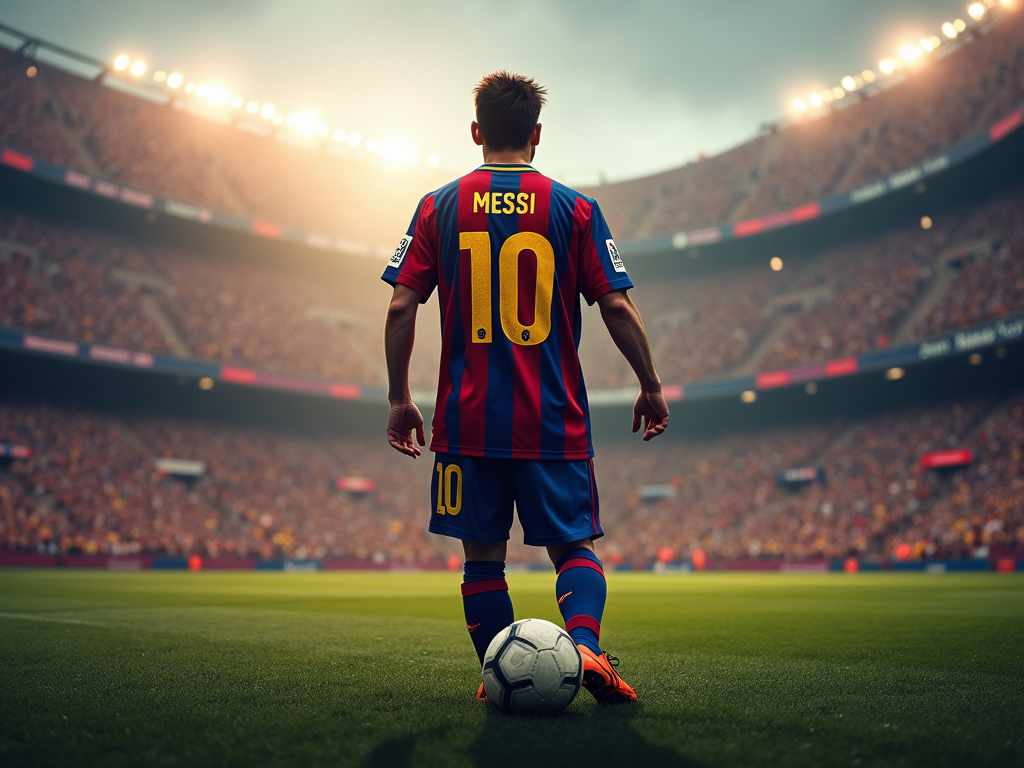

Chapter 4: Challenges Faced
The cold night air in Barcelona stung Lionel Messi’s face as he limped off the training field. Another muscle strain. Another setback. His left leg throbbed with a familiar pain that had become all too common in recent seasons. At just 24 years old, he was already intimately familiar with the fragility of a professional athlete’s body. Doctors had warned him about his growth hormone deficiency since childhood. The treatments in Argentina had been expensive, and Barcelona’s medical team had initially taken a chance on him. Now, each injury felt like a personal battle against his own physical limitations. The muscular tensions and recurring hamstring problems threatened to derail the extraordinary potential everyone saw within him. The pressure was immense. Every missed training session, every game he couldn’t play, whispers would circulate. Some critics suggested he was too fragile, too small to survive at the highest level of football. Messi would sit in the physiotherapy room, watching teammates train, feeling a mixture of frustration and determination burning inside him. His family knew these struggles intimately. Jorge Messi, his father and agent, had sacrificed everything to support his son’s dream. Those late nights discussing medical treatments, negotiating with clubs, managing expectations – they were a constant reminder of how much was at stake. Football wasn’t just a game for Messi; it was survival. Each rehabilitation session became a war against his own body, pushing boundaries, challenging limitations that had been prescribed to him since childhood. The doctors who once said he might never play professional football were now witnesses to his relentless spirit. Personal challenges complemented his physical battles. The expectation of representing Barcelona and Argentina simultaneously created enormous psychological pressure. Comparisons with legends like Maradona haunted him, a weight he carried with quiet resilience. His shy personality made these public struggles even more challenging. While other players might loudly proclaim their resilience, Messi’s response was always through performance – letting his extraordinary skill on the field speak louder than any words.
The locker room buzzed with tension after another disappointing match. Teammates avoided eye contact, the weight of expectations crushing their spirits. Messi sat quietly, his cleats caked with mud, hands clasped between his knees. He knew the criticism would be brutal – social media, newspapers, fans would dissect every moment of the match. Pep Guardiola approached, his hand resting briefly on Messi’s shoulder. No words were necessary. Their connection transcended typical coach-player relationships. Guardiola understood Messi’s internal struggles better than anyone – the silent battles, the constant desire to prove himself beyond physical limitations. “Your body might have limits,” Guardiola had told him years earlier, “but your mind does not.” Those words echoed through Messi’s consciousness during every challenging moment. Each injury, each setback became an opportunity for reinvention. His relationship with his family became his strongest support system. Antonela, his childhood sweetheart and future wife, remained a constant source of strength. She witnessed the late-night rehabilitation sessions, the moments of frustration, the silent tears of pain and determination. The Argentine media’s relentless scrutiny added another layer of complexity. Comparisons with Maradona were not just professional assessments but national expectations. An entire country’s football pride rested on his shoulders – a burden most athletes could never comprehend. Training sessions became psychological warfare. Messi would push himself beyond recommended limits, challenging medical protocols, refusing to be defined by his physical constraints. Each muscle stretch, each sprint was a declaration of defiance against those who doubted his potential. The growth hormone treatments that once seemed like a limitation now transformed into his greatest motivation. What others saw as a weakness, he transformed into an unbreakable resilience. His small stature became a weapon, his low center of gravity a tactical advantage that would redefine football’s understanding of physical prowess.
International tournaments presented another battlefield of challenges. The Argentine national team carried generations of football disappointment, and Messi bore the brunt of those expectations. Critics continuously questioned his leadership, his ability to replicate his Barcelona brilliance on the international stage. Copa America tournaments became emotional crucibles. Each missed opportunity, each tournament without a trophy, felt like a personal failure. The weight of an entire nation’s football dreams pressed against his shoulders, a pressure so intense it could crush lesser athletes. Jorge Messi worked tirelessly behind the scenes, managing media narratives, protecting his son from excessive criticism. Phone calls between father and son were filled with strategic discussions, emotional support, and unwavering belief. Their relationship transcended typical parent-child dynamics – they were partners in Messi’s extraordinary journey. Tactical coaches recognized something unique in Messi’s approach to overcoming challenges. His ability to transform physical limitations into strategic advantages became legendary. Where other players might see obstacles, Messi saw opportunities for creative problem-solving. Psychological resilience became his most significant weapon. Injuries that would end other players’ careers became mere interruptions in his narrative. Rehabilitation became a calculated science, with Messi treating his body like a complex machine that could be continuously recalibrated and improved. The Barcelona medical team developed specialized training protocols specifically designed for his unique physiological makeup. What began as a medical challenge transformed into a revolutionary approach to athlete management. Messi wasn’t just recovering; he was redefining human athletic potential. His quiet demeanor masked an internal fire that burned with extraordinary intensity. Every criticism, every doubt became fuel for his relentless pursuit of excellence. The boy from Rosario who was once considered too small, too fragile was systematically dismantling every limitation placed upon him.
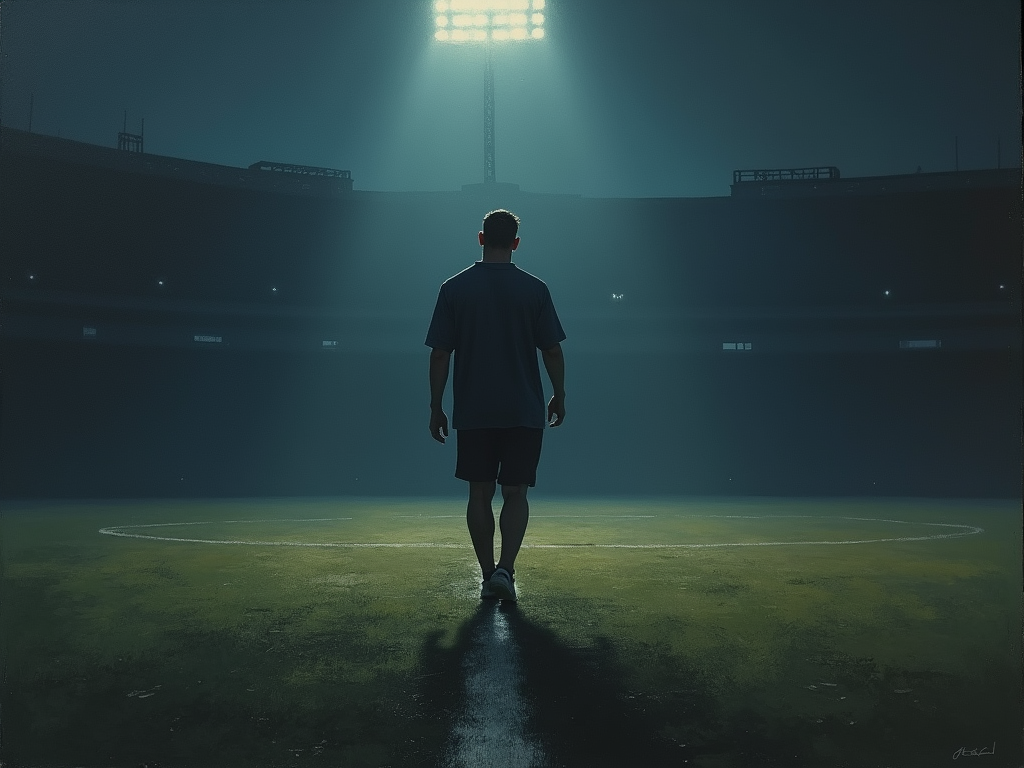

Chapter 5: Legacy and Impact
The weight of history pressed against Lionel Messi’s shoulders, not as a burden but as a testament to his extraordinary journey. His impact transcended mere statistics, reaching into the very soul of football. From the dusty streets of Rosario to the grand stadiums of Europe, he had rewritten the narrative of what was possible for a footballer. In Barcelona, his silhouette was etched into the club’s DNA. Twelve years of magical performances had transformed him from a promising young talent to a global icon. The Camp Nou wasn’t just a stadium; it was a cathedral where Messi had performed weekly miracles, leaving generations of fans breathless with his extraordinary skill. His playing style represented more than technical brilliance. It was poetry in motion, a delicate dance of precision and imagination that challenged conventional understanding of the game. When he moved with the ball, defenders seemed to exist in a different dimension, unable to comprehend or contain his magical movements. Beyond individual achievements, Messi represented hope for millions. In Argentina, he was more than a footballer – he was a national symbol of resilience and excellence. His World Cup victory in 2022 wasn’t just a sporting triumph; it was a healing moment for an entire nation that had long yearned for international glory. Young players across continents now studied his techniques, mimicked his movements, dreamed of replicating his extraordinary career. Football academies worldwide incorporated elements of his playing philosophy, understanding that Messi represented a new paradigm of athletic excellence. His legacy wasn’t confined to trophies or records, though those were monumentally impressive. It was about how he transformed expectations, showed vulnerability alongside superhuman skill, and maintained extraordinary humility despite unprecedented success. Scientific studies would eventually analyze his biomechanics, tactical intelligence, and psychological resilience. But no empirical research could fully capture the emotional resonance of his journey – a story of a small boy from Argentina who became a global phenomenon.
The global football ecosystem had fundamentally transformed because of Messi. Coaches now sought players with similar fluid intelligence, understanding that technical skills coupled with strategic thinking could revolutionize team dynamics. His playing style challenged traditional positional constraints, creating a more adaptive and intelligent approach to the game. In Argentina, children wore his jersey not just as a fashion statement but as a symbol of aspiration. Streets in Buenos Aires and small villages alike echoed with stories of his extraordinary journey. Parents would recount his struggles, his early medical challenges, and his unwavering determination to young dreamers who saw themselves in his narrative. His relationship with Barcelona represented more than a professional contract. It was a profound love story between a player and an institution, a bond that transcended conventional athletic partnerships. The Camp Nou wasn’t merely a stadium but a sanctuary where Messi’s genius was celebrated, analyzed, and immortalized. Tactical experts noted how he redefined the role of a forward. No longer confined to traditional scoring metrics, Messi demonstrated that creativity, vision, and strategic intelligence were equally important as goal-scoring prowess. His ability to read the game, anticipate movements, and create opportunities transformed modern football’s strategic understanding. International tournaments became stages where his leadership emerged most powerfully. The 2022 World Cup wasn’t just a personal triumph but a collective emotional journey for Argentina. His teammates spoke of his quiet motivation, his ability to inspire without grand speeches, leading through extraordinary performance and genuine vulnerability. Economically, Messi represented a global brand that extended far beyond football. Sponsorship deals, marketing campaigns, and global recognition showcased how an athlete could become a universal cultural icon. His impact resonated in boardrooms, marketing strategies, and young entrepreneurs’ aspirational narratives. Philanthropic efforts added depth to his legacy. Through his foundation, Messi consistently invested in educational and healthcare initiatives, particularly focusing on children facing socio-economic challenges. This dimension revealed a humanity that complemented his athletic brilliance, showing that true greatness extends beyond sporting achievements.
